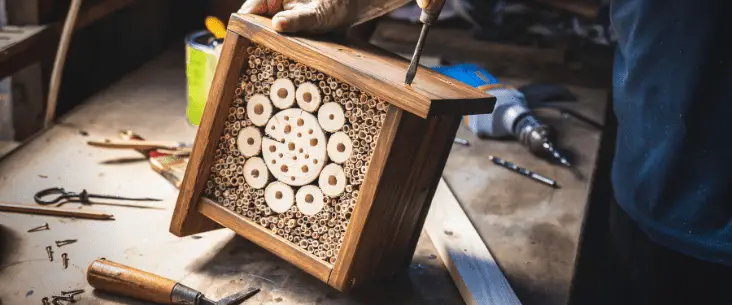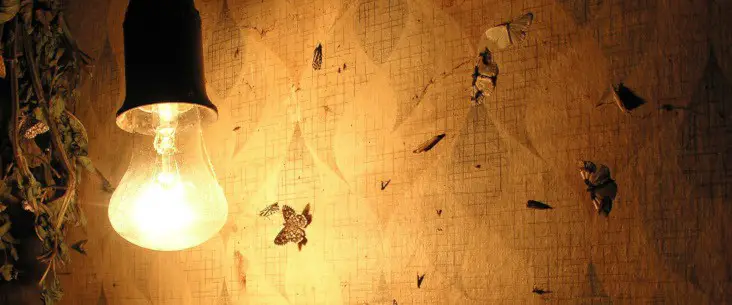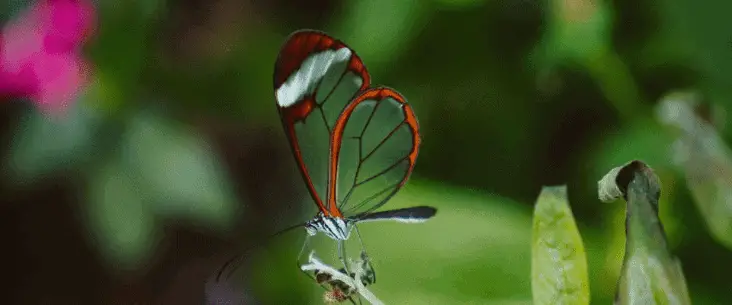Isn’t it lovely to see beautiful butterflies fluttering through the garden, buzzing bees on the flowers and ladybugs crawling between the plants? Insect populations are dropping quickly, with dramatic consequences for our biodiversity. With simple things, we can make our gardens a much nicer place for insects. In this article, I will discuss 9 practical tips on how to make your garden a better home for insects.
You can make a better home for insects in your garden when doing more of all of the 9 tips provided:
- Get rid of the paving in your garden
- Provide a healthy soil for your plants
- Choose for local plants instead of exotic species
- Have flowers almost every season of the year
- Use natural enemies for pest control
- Create a natural pond for more life
- Place homes for insects to shelter and breed
- Let nature sometimes just do his thing
- Be less tidy and leave the mower in the shed
Check out these tips more in-depth in the article below and find out what you can do to attract more insects to your garden. Sometimes it can be a simple and easy thing that has already a big impact on these amazing and important creatures.
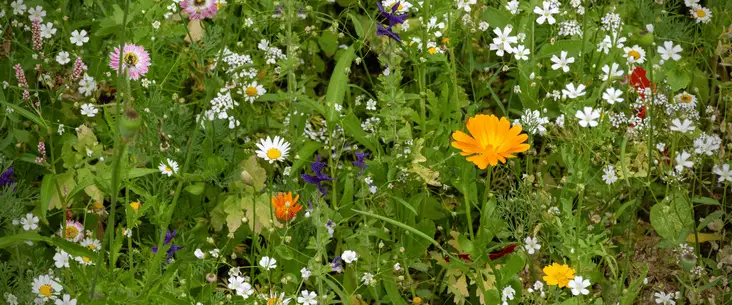
#1 Get Rid Of The Pavement Terror
Currently, we tend to use a lot of pavement in our gardens. However, when you wish for more insects in your garden, start by removing tiles to create more space for flowers and plants to grow.
Less paving in our gardens has many advantages. Rainwater can be absorbed into the ground, it reduces heat in your garden, and it increases the space for beautiful plants and flowers. Without plants and flowers, insects will skip your garden and will go elsewhere.
Actually, studies show that we have too much pavement in our cities and villages. Insect populations (especially pollinating insects) have dropped immensely in many parts of the world. One of the reasons is that we tend to pave all our urban space and leave no room for green.
But what to do with those tiles? You can use them to build a wall that suits the needs of insects. If you stack the tiles or bricks and leave different-sized gaps between them, it provides shelter for insects. You can place straw, twigs, straw or other natural items between them or plant insect-friendly plants (like sedum).
#2 It Starts With A Healthy Soil
A healthy soil means nutrients for your plants, and that creates a garden full of insects. However, what makes the soil healthy?
First, don’t over-cultivate your soil. Worms and other beneficial insects live in the ground and create tunnels for air to reach the roots. Beneficial fungi and bacteria also keep your soil healthy. If you continuously turn the soil over and cultivate it, it negatively impacts these effects and reduces those insects.
Don’t remove every leaf and ground. This is a natural resource to restock nutrients into the ground so, in turn, plants and flowers can grow. It is also food for worms, fungi and bacteria to survive.
Do you know these gardens with a couple of plants and neatly black soil in between? It is much better to cover the ground with all kinds of foliage. Water won’t evaporate too quickly, and the soil stays cooler, which benefits the plants and creatures living in the ground. Another reason why it is better to keep those leaves on the ground.
Recommended read: Why are insects the most successful animals?
#3 Choose Local Plants Over Exotic Ones
You can get the most beautiful and extraordinary plants in most garden centres. However, for insects to flourish, it is much better to choose native flowers instead of exotic species. Many exotic flowers are not beneficial for our own native insects.
Insects have adapted in a certain way to survive on the plants and flowers that are native to that area. Increasing the amount of native flower species will also increase the amount of insects.
Some flowers are cultivated for aesthetic reasons or to be new and special. People like to have different shaped and coloured flowers in their gardens. However, those propagated flowers have lost the production of nectar and pollen and are not beneficial for insects at all. Sometimes the shape makes it impossible for insects to collect the nectar, and so they will skip those flowers.
If you plant more native species of (wild) flowers in your garden will attract a lot of insects over time. Try to find which plants will naturally occur in your region.
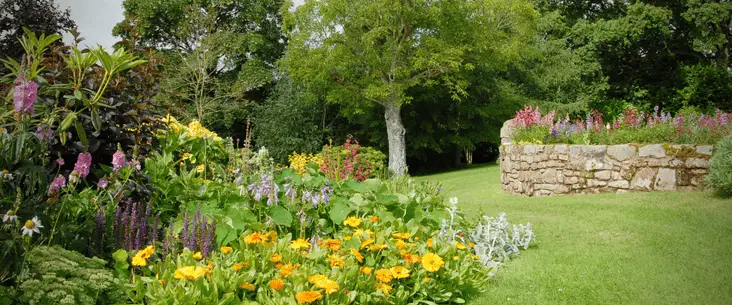
#4 Have Flowery Plants For All Seasons
Depending on the region, insects hibernate in the winter. For all other months, they need food to survive. If you only have flowers in the summer months (May to August), insects have difficulties collecting enough food. They stay away, or even worse, will die out of hunger.
Try to find plants that flower in different months so that you have flowers from as early as February until October. This will not only be beneficial for the insects, like bees, wasps, beetles and butterflies but also makes your garden look more beautiful every month. It will change the scenery depending on the season, and every month you will have different colours flourish in your garden.
Try to plan out or map out your garden and research when different plants will flower.
#5 Use Insects To Control Pests
Even when you want to attract insects in your garden, some insects form a pest that harm or destroys plants. These pests are often insects that are doing too well, and there is no predator that controls the population.
You probably know the feeling of slugs eating all your lettuce. Or louse sipping all the nutrients of plants so that they won’t flower.
Do not grab the first pesticide available to attack those pests. There are better ways to control these animals. As I said before, pests are animal populations that grow too quickly and don’t have a natural predator to control them. Well, let’s introduce these predators, then.
You can find for almost any garden pest a natural predator to control it. These natural enemies eat them, and that way, control these animals.
Ladybugs, for example, are very important animals. Their larvae attack different species of plant louse.

#6 Create A Natural Pond
If you have some space in your garden, it would be very beneficial to create a natural pond. The easy way is to buy a ready-to-use pond from the garden centre. However, a large bucket (mortar tub) will also do the trick. But, if you like a more natural look, you can dig out a pond a seal it with a special pond liner.
Whatever you choose, a pond will attract many other insects, like dragonflies, damselflies, water beetles and pond skaters.
Add rocks, tree stumps, branches and water plants. Make a slope with different depths. In this case, too, choose plants that are native to your area.
Ponds are a real addition to your garden when it comes to insects. Water is an important source for insects too, and you will definitely see an increase in insect numbers and species.
#7 Place Insect Hotels And Nests
You talked about it before, but insects do need shelter to rest, hibernate and reproduce. Insect hotels, as the word suggests, are made for this purpose. So when you want to attract more insects, you also need to provide insect hotels.
You have insect hotels in all kinds of shapes and sizes. One even more bizarre than the other. However, keep in mind that it is not for you to like it but to facilitate the needs of insects.
Don’t buy insect hotels that are painted or treated with a varnish. This will have an impact on the health of the insects. Choose the ones that are made of natural materials and are unpainted.
You can also make insect hotels yourself quite easily. With a quick look on Google, you can find many guides and ideas on how to make them. However, there are some things to take into account. I have made an article about the things you need to consider before creating your own insect hotel.
For example, it is much better to create multiple smaller hotels than one large hotel. Many animals won’t tolerate each other, and it is better to place several small ones around the garden.

#8 Be A Messy Gardener
Make a bit of a mess in your garden. That sounds like a bit of strange advice, and it takes some time to get used to, but it attracts more insects over time. Give nature the space and time to flourish, and don’t intervene too much in your garden (pruning, weeding).
Do you have a corner in your garden that is out of sight? Make a pile of prunings and composting leaves. It is a great place for insects to shelter. Are there growing nettles: Even better! Many butterflies like to lay eggs on these plants.
Forget all the neatness and make a bit of a mess. Let nature do what it does and it provides for the needs of insects. Forget the tidy gardens and black soil. Be a messy gardener!
#9 Leave The Mower In The Shed
Let the mower in the shed. Well, not all the time, but try to mow less frequently or let one part of your lawn stay and grow. Oftentimes a lot of wildflowers emerge between the grass, which in turn attract a lot of insects.
For example, dandelions. Maybe not your favourite flower, but a very important one for insects. It is one of the flowers that flourish early on in the season, providing valuable food for many insects.
So when you can, try to let the mower in the shed, especially in the spring when insects need every flower and shelter they can get.
Make Your Garden A Heaven For Insects
I hope these tips and information inspire you and provide the tools to make your garden a haven for insects. You don’t have to do all. Find the tips that resonate and suit you and your garden best. All these help increase the number of insects and insect species. It will help increase the biodiversity and food chain for many other animals (including us).
When you provide a place for insects to live, you’ll see that other animals will also be drawn to your garden. Think of many species of birds, hedgehogs, bats, frogs, and lizards. You can create your own little biodiversity hotspot.
Much more to learn!
There is much to learn about insects in your garden. Check out our other articles in the suggested reading section below.
Share this page!

